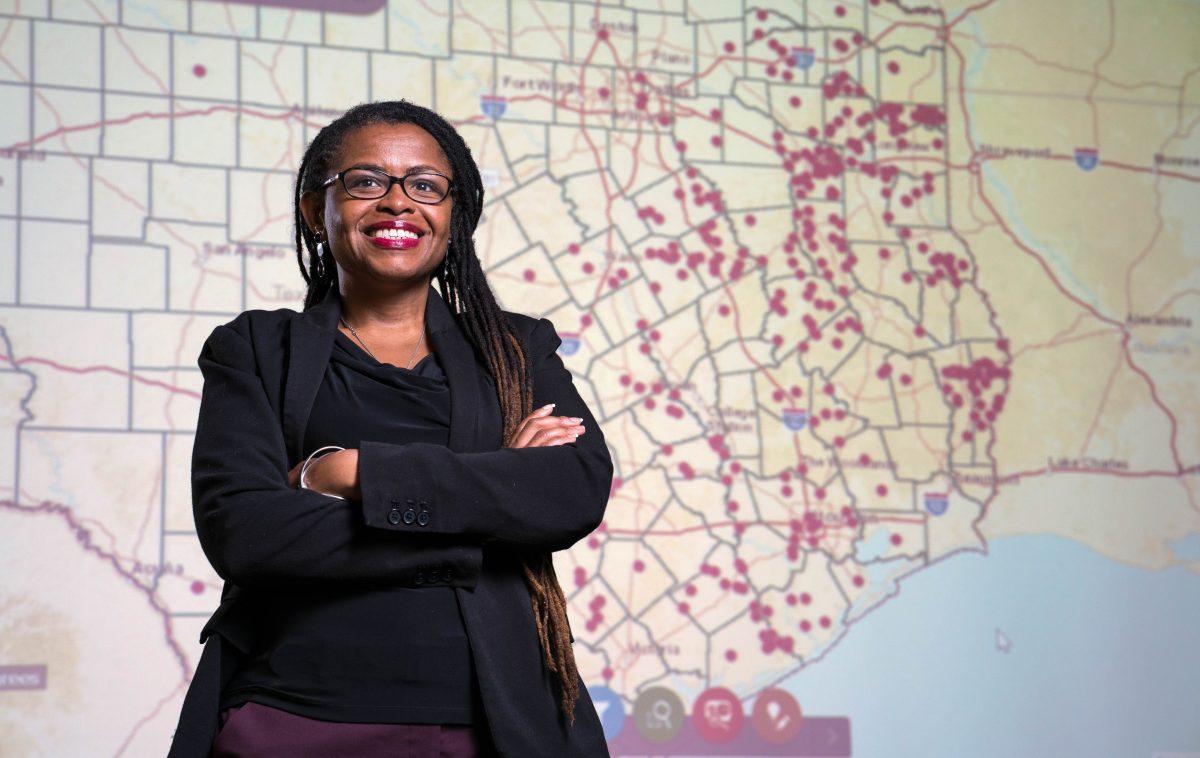A Texas A&M professor is continuing an intensive Texas-based research project, mapping and preserving historic African-American settlements in the Lone Star State.
The settlements, commonly called freedom colonies, are places that were intentionally created and occupied by African-Americans, particularly after the Civil War. Currently, the number of freedom colonies established in the U.S. is unknown.
Andrea Roberts, an assistant professor in A&M’s department of landscape architecture and urban planning, is conducting an extensive research project to identify and preserve the history of freedom colonies throughout the state of Texas. Roberts started The Texas Freedom Colonies Project during her doctoral studies at the University of Texas, and it has expanded into more discoveries over the years.
Roberts’ interest in historic black settlements come from both her personal and professional experiences.
“As a government administrator in public finance and housing, I noticed that many of these historic African-American communities were disproportionately poor and separated from the mainstream planning processes,” Roberts said. “The reasons for this vary. For example, some communities were never officially on the map, or some were once independent, but have a low population because of the out migration in the 1930s, and therefore they have dropped off maps and out of all the documents that are associated with the planning processes.”
Roberts has developed a methodology to identify the freedom colonies in Texas and has performed extensive ethnographic research. Her methods include visiting these places and conducting oral history interviews, focus groups and participatory observations at annual events in these communities.
“There may be no one available in these settlements for most of the year,” Roberts said. “The only opportunity to meet people in some of these settlements are usually during their annual reunions, friends and family days and homecomings, in which people reunite in the settlements either at the church or nearby buildings.”
Overall, the Texas Freedom Colonies Project involves a three-fold mission. The first mission is to record the history of African-American place creation which took place between 1865 and 1920.
“These settlements were made right after African-Americans gained their emancipation in Texas, and it started by building all these institutions — like schools, churches, cemetery etcetera — that anchor these places,” Roberts said. “Very often, the way people find a freedom colony is to find a cemetery and try to find out who knows the people that are buried in there.”
Mohammadjavad Biazar, a graduate student in the department of landscape architecture and urban planning who is also a part of the project team, said he is excited about the potential of the project.
“The project is evolving every day; we are constantly finding new settlements,” Biazar said. “We currently have a database of 357 settlements. This could be a national database, not only for Texas. Our project could be a framework for the whole country to collect information not only about the African-American communities but every other settlement that has history.”
Another important aspect of the project’s mission is to find out how African-Americans who are part of the descendant communities are preserving these places.
“The second fold of the freedom colonies project is to find out the present-day activities, such as what people are doing to keep people committed to these places and involved with the historic preservation and heritage conservation activities,” Roberts said.
The final aim of the project is the engagement, data collection and participatory mapping with the public.
“These will help us answer the big questions such as how many settlements are left and how many people still live in these settlements, because no one is asking these questions,” Roberts said. “All we have are census maps that tell us that there are concentrations of African-Americans, but it doesn’t tell us where all the freedom colonies are.”
The Texas Freedom Colonies Project involves various steps, including developing a relationship with these communities to engage in co-researching, co-planning and co-preserving.
“We listen intensely to these communities about where they are, what they need, and then we talk about our mapping project,” Roberts said. “Our collection of data can help us not only produce these maps and body of research, but help these communities where they are at.”
Roberts said the future of the Texas Freedom Colonies Project is to see a substantive investment of time and money from the federal, state and county governments to support these communities.
“We look at the history by recording the past and the present to see the current struggles and successes that the descendants have in trying to the preserve the communities, and finally making the maps and being able to use the data behind the maps to produce research that lets us know what kind of policies that need to be made, the changes in planning and preservation that are needed to help serve these underserved communities,” Roberts said. “In the future, what I would like to do is map every single historic black settlement in the African diaspora around the world because they are all interconnected. That’s the real vision.”
For more information about the Texas Freedom Colonies Project and the online mapping tool, visit thetexasfreedomcoloniesproject.com.
http://www.thetexasfreedomcoloniesproject.com/2018/08/the-texas-freedom-colonies-project.html and https://tamu.maps.arcgis.com/apps/webappviewer/index.html?id=e41ee7d3e5f84a19969ca05327586f67
A&M professor’s research documents historic African-American settlements
February 25, 2019
Photo by Provided
Department of Landscape Architecture and Urban Planning assistant professor Andrea Roberts began The Texas Freedom Colonies Project while earning her doctorate at the University of Texas.
Donate to The Battalion
Your donation will support the student journalists of Texas A&M University - College Station. Your contribution will allow us to purchase equipment and cover our annual website hosting costs.




















